The first report, released in 2021, provided a comprehensive snapshot of the scale and activities within Warmblood breeding, contextualized within the broader horse industry. With the release of the second State of the Industry Report, the focus expands beyond data to encompass the critical aspects of Welfare and Social License to Operate.
Key objectives of the 2022-2023 edition include:
- Transparency for a Conscious Industry: Emphasizing transparency, the report seeks to bring greater visibility to industry practices, appealing to a more conscious and informed audience. By sharing insights into breeding practices and industry operations, it aspires to create a more accountable and responsible sector.
- Constructive Engagement: The 2022-2023 SOI Report encourages constructive and productive engagement among key stakeholders, including the World Breeding Federation for Sport Horses (WBFSH), studbooks, breeders, the Fédération Équestre Internationale (FEI), National Federations (NFs), and riders. This collaboration aims to foster unity and cooperation for the improvement of the industry.
- Identifying Emerging Trends: In addition to providing a current snapshot of the industry, the report aims to identify emerging trends that can shape the future of sport horses breeding. By staying ahead of challenges and opportunities, stakeholders can proactively navigate the evolving landscape.
- Relevant Information for Industry Development: The report remains committed to providing relevant and practical information that contributes to the continuous development of the industry, which includes insights that can inform decision-making, policy development, and strategic planning.
A few word from the Report's authors:
"While this second State of the Industry report has allowed us to create an overview of the industry’s current landscape, going forward, with the collection of statistics of subsequent years, it will be possible to gather more data on trends, between studbooks, but also from the industry as a whole. Studbooks can measure their success, and for smaller studbooks, there is the opportunity to make comparisons with their peers, rather than to measure themselves against the bigger players in the industry. But these trends are important not only for our breeders and studbooks. The sectors of breeding and sport are closely connected and interdependent. And we hope to have captured the interest of other stakeholders in the industry – national federations, riders, owners etc. For the next SOI report, to examine further how the health of the breeding industry impacts on sport and vice versa, we hope to expand on how registrations of horses, the number of horses going into the sport, and the worldwide economic state influence the sectors. Covid-19 was not as detrimental to the breeding industry as initially anticipated, with foal numbers having actually continued to rise. But with worldwide pressures we are now facing, with war and an economic decline, we expect to see changes in the years to come.
In addition to statistics of the industry we explored the frequency and types of breeding technologies used. This data was difficult to collect, and it is clear that there is a lack of transparency on the frequency of use of various techniques. ET, ICSI, cloning etc are techniques that are changing the landscape of breeding, but it will only be in years to come that we can establish quite how our industry has been shaped by these. Are there implications for inbreeding, for health, and other factors yet to become apparent to us? We hope to be able to shed some light on this in the future.
Collection of data will remain an important element of future reports. But insights into health and welfare, and the social license to operate will provide building blocks to good breeding practices. Selection for health, not just of performance, is an important consideration for every breeder. Some conditions that have been current in the media have been examined in this report, and future reports will continue to build on exploring other conditions that are note-worthy for our breeders.
A separate project of the WBFSH on producing a Welfare Statement that will underpin elements of good breeding practices has kicked off, in collaboration with Hartpury University. Results of this project are anticipated at the end of 2024. There is a strong overlap between the State of the industry report and the Welfare Statement, with topics of mutual importance. Social license to operate and welfare are continuing themes, and therefore will continue to form an important element of following State of the Industry Reports. We have started off with an overview or these two topics, and aim to further explore them, so that we can fulfil our responsibilities to our horses and our industry as a whole. It is the love of the horse that is at the root of all of this, and we want to be able to continue and grow for years to come, so that our industry is healthy and sustainable".
Katy Holder-Vale
Renai Hart
Kaasandra Chee




